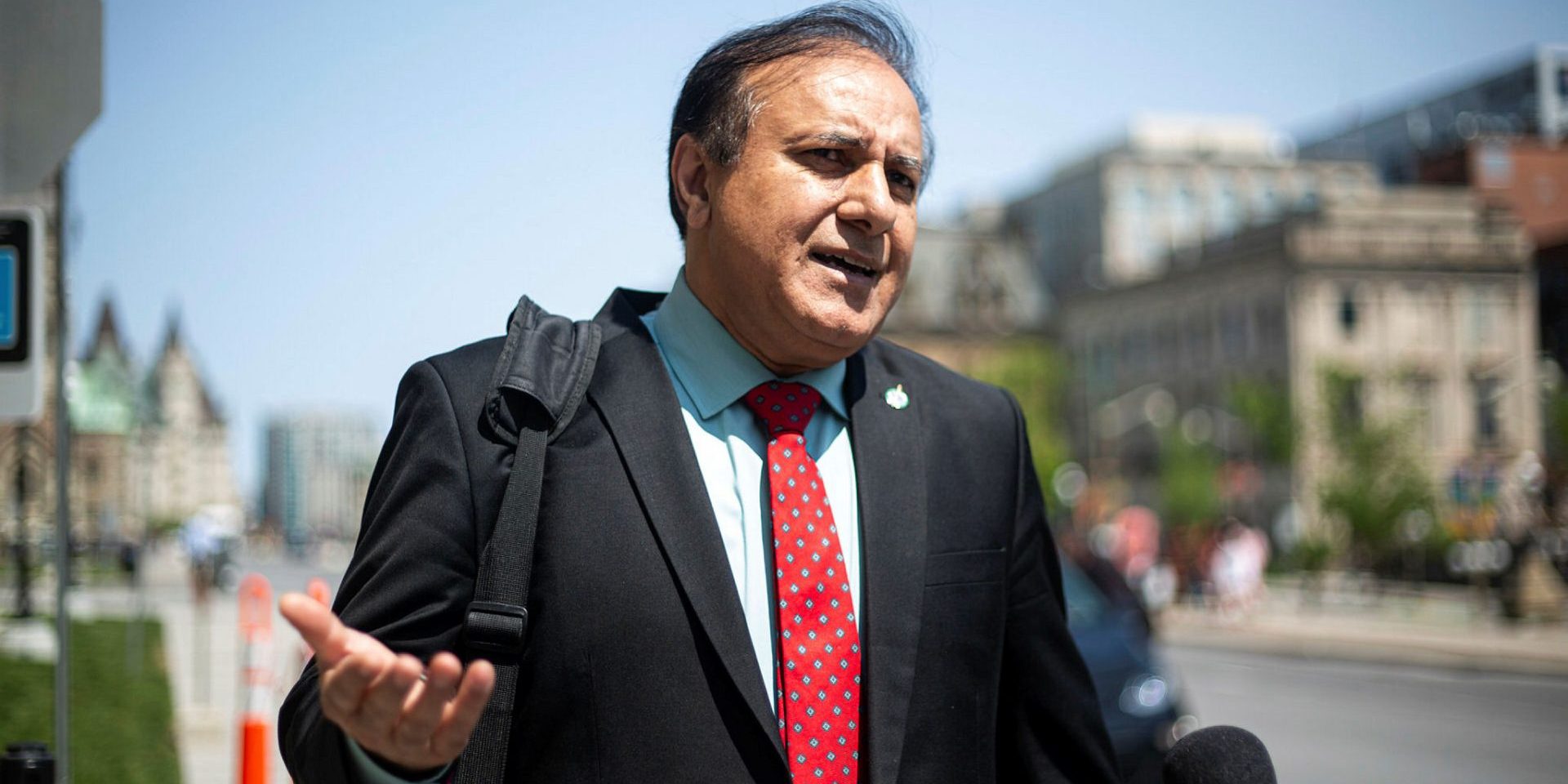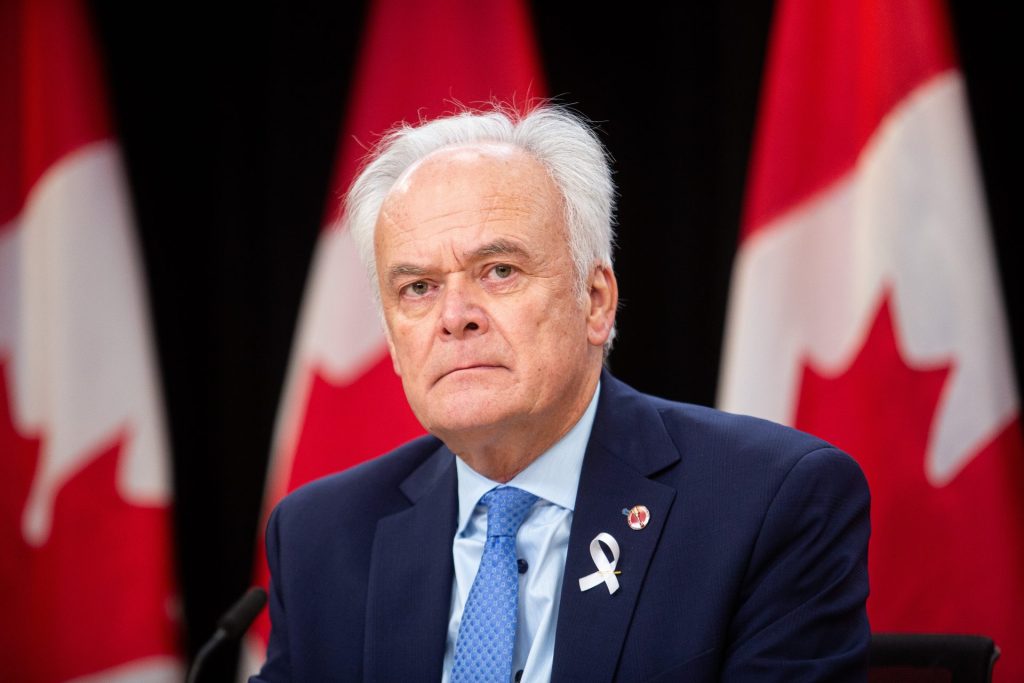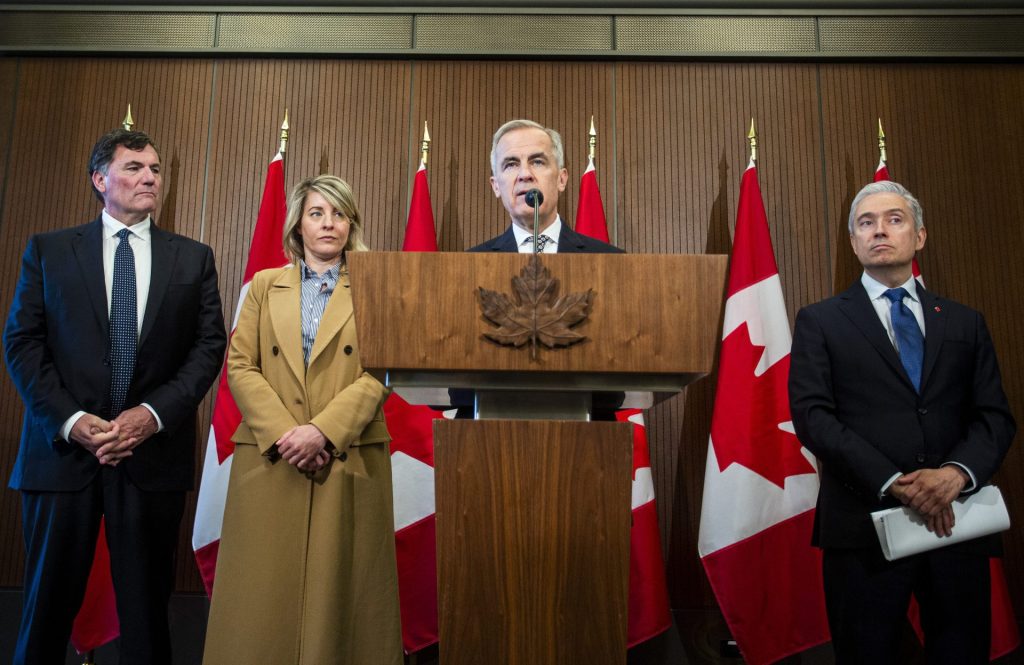Treasury Board outlines 500 ways to cut red tape in sweeping review

A sprawling red-tape reduction review has identified nearly 500 initiatives targeting regulations within the federal bureaucracy, covering everything from nuclear safety to cannabis licensing.
Treasury Board Minister Shafqat Ali (Brampton—Chinguacousy Park, Ont.) launched the 60-day “red-tape review” on July 9, which coincided with a government-wide spending review that calls for departments and ministers to slash spending by 15 per cent over the next three years.
In a Sept. 8 update, Ali said the initiatives include recent efforts already in underway, and “forward-looking” plans designed to remove outdated regulation, reduce duplication with provincial rules, and making it easier to access and deliver services.
Now, after dozens of departments and agencies have submitted progress reports, Ali said proposed initiatives “include important benefits for Canadians,” like quicker access to new pharmaceuticals.
“They will also support key economic sectors, such as transportation and agriculture by speeding up decision-making, and streamlining processes to increase productivity,” Ali said in a Sept. 8 statement.
“Reduced red tape will support Government of Canada priorities, like more efficient reviews of projects to drive economic growth, and greater collaboration with trading partners to reduce barriers and help get products to market faster.”
Five hundred ways to reduce red tape
A summary of the 500 initiatives includes supporting regulatory efficiency, getting products to market faster, reducing barriers to business productivity, supporting international trade and efficiency at the border, and enhancing regulatory service delivery.
Twenty-nine departments and agencies submitted progress reports on their efforts to reduce red tape alongside 33 “portfolio partners.” Finance Canada, for example, houses reports for Bank of Canada, Canada Revenue Agency (CRA), and more.
Finance Canada’s report outlines efforts tied to policy development, modernizing regulations, emphasizing clarity and collaboration, and eliminating redundant or outdated policies. The report says it has 33 “completed or planned” initiatives. Some of the planned initiatives include the CRA increasing the number of Canadians eligible to to use the SimpleFile digital service, meaning more people can automatically complete and submit their tax returns.
The Treasury Board Secretariat’s (TBS) report outlines the measures it’s taking to reduce what it calls the “regulatory burden” across the government, including opening the Red Tape Reduction office.
As the public service’s employer, though, TBS is also looking to change some of its own regulations, including administrative aspects of the public service pension plan by clarifying some definitions and simplifying certain processes, and allowing pension plan members to submit forms electronically, “to reduce administrative burden for both individual plan members and the Government of Canada.”
TBS is also proposing initiatives to “reduce complexity, administrative burden, and compliance costs and make government operations more efficient,” including harmonizing Canada’s legal obligations for procurement into one set of regulations, among others. Public Services and Procurement Canada was not among the departments with published progress reports.
Regulation-heavy Health Canada’s report emphasized reducing trade barriers, improving services, focusing on “risk-based regulating,” streamlining regulations and simplifying rules, as well as developing new products.
Health Canada’s report says stakeholders have “raised a number of concerns” about its red tape in recent years, including duplicative requirements, complex forms and processes, and lengthy approval processes.
The department said regulations are an important tool to protecting the health and safety of Canadians, as “they protect the safety and quality of food, medications and other consumer products that may have an impact on health and safety of people in Canada.”
But those regulations can be “complex, overly prescriptive or become outdated,” which can result in administrative burden.
Since his spring election, Prime Minister Mark Carney (Nepean, Ont.) has stressed efficiency as a way to make this country’s economy the strongest in the G7.
Ali said the Red Tape Reduction office, led out of the Treasury Board, will lead work with federal regulators and undertake a “horizontal” red-
tape review, “which will further eliminate regulatory barriers for business and deliver better and faster regulatory service,” he said. “Provinces and territories will also be engaged to support a collaborative way forward.”
Spending review goes ‘hand in hand’
Ontario Senator Peter Boehm, a former diplomat who has held a variety of senior roles at what is now Global Affairs Canada, said TBS’s review is a universal application of what departments typically do on their own accord.
“I think it’s interesting this time, that it’s the Treasury Board that’s saying, ‘okay, look at your procedures, look at your duplication,’” said Boehm, who is a member of the Independent Senators Group, adding the red-tape review is happening in “that broader context” of the expenditure review.

“Those things can go hand in hand, in my experience,” he said, citing then-prime minister Jean Chrétien’s expenditure review in the mid-1990s, and also former prime minister Stephen Harper’s “deficit reduction” efforts, which Boehm called a “difficult” time in the public service, with deputy ministers in charge of identifying priorities within each individual department.
“The big challenge for the senior levels of bureaucracy is to try to set out priorities,” he said, as “in the end, everything becomes a priority.” That left the cuts up to TBS, he said, and “that way, no one wins.”
This time, Carney has made it no secret that he is laser focused on one priority: boosting the economy. Following his post-election cabinet shuffle, Carney’s 28 cabinet ministers were each delivered the same mandate letter, outlining marching orders to “build an enormous amount of new infrastructure at speeds not seen in generations,” Carney wrote.
“Government itself must become much more productive by deploying AI at scale, by focusing on results over spending, and by using scarce tax dollars to catalyse multiples of private investment.”
In the context of red-tape review, Boehm said duplication is one easy way to reduce cumbersome regulations. From his time as a high-ranking public servant, Boehm felt there was too much by way of regulations on the administrative and accounting side, “which grew exponentially,” he said. “You don’t necessarily need someone to watch the person who’s already watching.”
The red-tape review accompanies a spending review, Boehm said, to ensure systems and procedures aren’t overlapping, causing delays or other inefficiencies in budgets or human resources.
“And Prime Minister Carney has not given them a lot of, shall we say, room in terms of time to get this done,” he said. “That is going to be the challenge.”
The Carney government “seems to be determined” to follow through on shrinking the public service, which has grown “very large,” he said.

Last week, Finance Minister François Philippe Champagne (Saint-Maurice–Champlain, Que.) said the government “will find adjustments” within the federal public service, following the expenditure review. The pace of public sector growth during the COVID-19 pandemic was “not sustainable,” he said.
‘Deregulation is having a moment’: Business Council
Pledging to slash red tape is not a new strategy in the name of finding efficiency in the public service. Ahead of the progress report, the Canadian Centre for Policy Alternatives (CCPA) summarized past efforts to slash red tape by former prime ministers Brian Mulroney, Chrétien, Harper, and Justin Trudeau.
“We’ve seen this movie before. Government efforts to root out so-called red-tape regulations have a long history. This deregulation trajectory has often compromised public safety—at times with catastrophic consequences,” writes Bruce Campbell, the former executive director of the CCPA.
“Only after a major disaster does the public become aware of the deep flaws in regulatory regimes and lose confidence in government’s ability to protect them.”
He cites the Ocean Ranger submersible that sank in 1982, the Westray Mine explosion which killed 26 miners in 1992, an outbreak of E. coli contamination in Walkerton, Ont., in 2000, as well as the 2013 Lac–Mégantic oil train disaster in Quebec when a derailed train exploded and killed 47 people.
“While odds of transcending the power status quo are formidable, actions by government insiders, labour groups, citizens advocates, can exert the necessary pressure to ensure that red-tape reduction measures do not compromise public health and safety,” writes Campbell.
The business lobby, though, argues Canada is stifled under red tape and regulations. In a report published Sept. 5, the Business Council of Canada proclaims “deregulation is having a moment” worldwide, and in Canada, “the frustration of dealing with competing jurisdictions, vague wording, and unending piles of forms has been mounting persistently to the point where Canada’s reputation as a steady and reliable place to invest is in question.”
The report says this country’s “regulatory burden” has grown 37 per cent since 2006, with more than 321,000 separate regulations on the books. It cites “regulatory pancaking,” or overlapping regulations from different jurisdictions, as costing Canada 1.7 per cent of GDP, 1.3 per cent of jobs, and nine per cent of business investment, citing Statistics Canada.
“Businesses across every sector, from natural resources to housing to finance, rank regulation as the single biggest barrier to new investment in Canada,” the report says.
mglass@hilltimes.com
The Hill Times






 LICENSING
LICENSING PODCAST
PODCAST ALERTS
ALERTS













